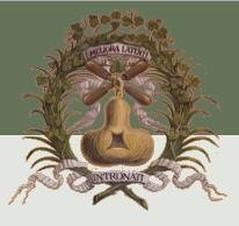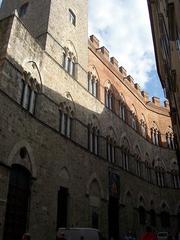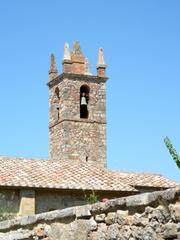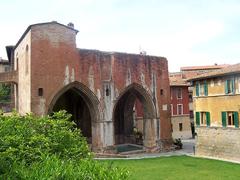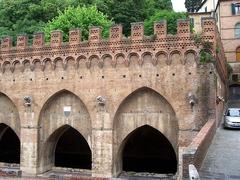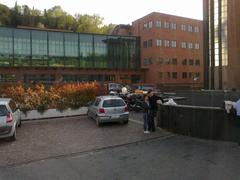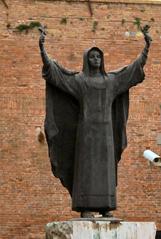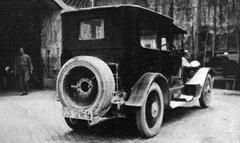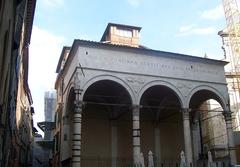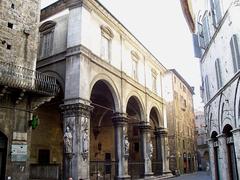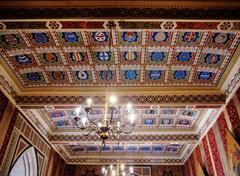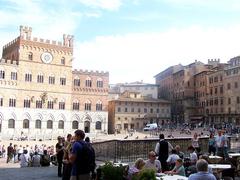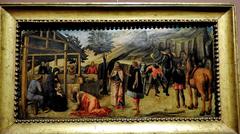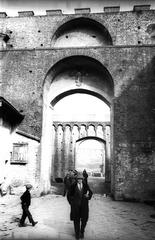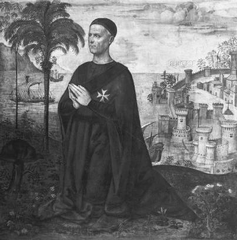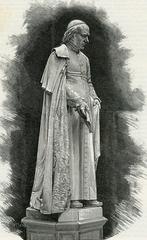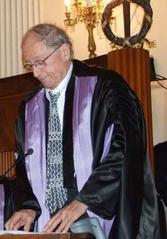Palazzo Chigi Piccolomini alla Postierla: Visiting Hours, Tickets & Complete Guide to Siena’s Renaissance Landmark
Date: 14/06/2025
Introduction
Palazzo Chigi Piccolomini alla Postierla stands as one of Siena’s finest examples of Renaissance architecture, bearing witness to the city’s noble heritage and artistic legacy. Built in the late 16th century for Scipione di Cristofano Chigi—a leading Sienese diplomat—the palace harmoniously blends Siena’s medieval urban landscape with the elegance of the Renaissance. Its richly decorated interiors, historic connections to the Chigi and Piccolomini families, and role as a cultural institution make it a must-visit for art lovers, history enthusiasts, and travelers alike (Pinacoteca Nazionale Siena; Artsupp).
This guide details all you need to know for a memorable visit—covering historical context, architectural highlights, practical visitor information, ticketing, accessibility, and nearby attractions.
Table of Contents
- Historical Overview
- Visiting Information
- Artistic and Cultural Highlights
- Frequently Asked Questions (FAQ)
- Conclusion
- References
Historical Overview
Origins and Early History
Palazzo Chigi Piccolomini alla Postierla was commissioned in the late 16th century by Scipione di Cristofano Chigi, a prominent political figure who played a vital role during Siena’s turbulent years, especially the 1554–1555 siege (Pinacoteca Nazionale Siena). The palace occupies the site of the ancient Porta Oria, known as “la Postierla,” which was incorporated into the building during its construction. This location rooted the palace in the city’s medieval framework (Artsupp).
Architecture and Interior Decoration
The palace’s design is attributed to Bartolomeo Neroni (“Il Riccio”), and it exemplifies the late Renaissance style with rusticated sandstone facades and elegant decorative elements. The Chigi della Rovere and later Piccolomini coats of arms adorn the building, signifying its noble patrons (Wikipedia). The structure includes two noble floors, reflecting the Chigi family’s social status and intended for use by different family branches (Siena Comunica).
Inside, visitors discover a grand central hall, stucco friezes, and frescoes by Marcello Sparti and Bernard van Rantwijck, depicting biblical, mythological, and historical themes. The palace also houses works by Sienese masters such as Rutilio Manetti, Bernardino Mei, and Raffaello Vanni, showing the transition into Baroque art (Siena Comunica).
Ownership and Preservation
Originally owned by the Chigi family, the palace passed to Giorgio Piccolomini Adami in 1785. Acquired by the Italian state in 1959, it has since served as a vital cultural institution, housing the offices and archives of the Pinacoteca Nazionale di Siena (Wikipedia; Artsupp).
Visiting Information
Location and Accessibility
Address: Via di San Pietro 29, 53100 Siena, Italy
The palace is situated in the historic La Postierla district, a short walk from Siena Cathedral and Piazza del Campo. Accessibility is a priority, with barrier-free entry to most areas. For specific needs or assistance, contact [email protected] or call (+39) 0577 281161. Accessibility details can be found on the Pinacoteca Nazionale di Siena’s visiting page.
Visiting Hours
Palazzo Chigi Piccolomini alla Postierla does not maintain daily public hours. Access is generally via guided tours, typically on Saturdays, and during special events or exhibitions (La Nazione). In March and May 2025, free entry is available every Thursday afternoon and Saturday morning. Always check the latest schedule on the official visit page or with local tourism offices.
Tickets and Guided Tours
- Standard Ticket: ~€6 per person (may vary for special events)
- Free Entry: During scheduled special openings (see above)
- Booking: Reserve online via CoopCulture or at the entrance if available (CoopCulture)
- Integrated Tickets: Combined access to other Pinacoteca Nazionale di Siena museums
Guided tours last 60–90 minutes and are offered primarily in Italian, with English tours available upon request. Tours showcase the palace’s artistic and historical highlights.
Travel Tips and Nearby Attractions
- Best Time to Visit: Spring (April–June) and early autumn (September–October) for mild weather and manageable crowds
- Arrive Early: Arrive 10–15 minutes before your tour
- Dress Code: Modest attire recommended
- Photography: Non-flash photography is generally permitted; always confirm with your guide
- Nearby Sites: Pinacoteca Nazionale di Siena, Siena Cathedral (Duomo), Museo Archeologico Nazionale di Siena
Artistic and Cultural Highlights
Key Rooms and Collections
- Facade: Rusticated sandstone with Chigi and Piccolomini coats of arms
- Grand Salons: Lavishly decorated with frescoes, stuccoes, and period furnishings
- Main Floor: Features biblical and allegorical frescoes, including the Chariot of Elijah and Jacob’s Ladder
- Second Floor: Highlights Roman historical themes and paintings by Dirck de Quade van Ravensteyn
- Library and Photographic Archive: Home to the Biblioteca e Fototeca della Pinacoteca Nazionale, supporting research and exhibitions
Special Exhibitions and Cultural Programming
The palace regularly hosts temporary exhibitions, conferences, and events such as the “Cesare Brandi si racconta” exhibition, celebrating the contributions of Cesare Brandi to art conservation (Ministero della Cultura). The palazzo is also a venue for scholarly events and public engagement initiatives, fostering appreciation of Sienese art (Gazzetta di Siena).
Frequently Asked Questions (FAQ)
Q: What are the current visiting hours?
A: Guided tours are usually available on Saturdays and during special exhibition periods. Free entry is scheduled for Thursday afternoons and Saturday mornings in March and May 2025. Check the official website for updates.
Q: How can I book tickets?
A: Reserve tickets online via CoopCulture or at the entrance if available. Booking in advance is strongly advised.
Q: Is the palace accessible for visitors with disabilities?
A: Yes, most public areas are accessible. For specific accommodations, contact the administration in advance.
Q: Are English-language tours available?
A: Yes, but request in advance when booking.
Q: What other attractions are nearby?
A: The palace is close to Siena Cathedral, Pinacoteca Nazionale di Siena, and other major landmarks.
Q: Can I take photographs inside?
A: Non-flash photography is allowed in most areas. Ask your guide for details.
Conclusion
Palazzo Chigi Piccolomini alla Postierla offers a unique window into Siena’s Renaissance and Baroque splendor, inviting visitors to explore its exquisite art, architecture, and rich history. By planning ahead—checking guided tour availability, booking tickets early, and considering accessibility needs—you’ll enjoy an enriching encounter with one of Siena’s most treasured historical sites.
For real-time updates, audio guides, and additional resources, download the Audiala app. Explore our related articles for more insights into Siena’s cultural heritage, and follow us on social media for the latest news and events.
References and Further Reading
- Pinacoteca Nazionale Siena – Palazzo Chigi Piccolomini alla Postierla
- Artsupp – Palazzo Chigi Piccolomini alla Postierla
- Wikipedia – Palazzo Chigi alla Postierla
- La Nazione – Palazzo Chigi Piccolomini alla Postierla visite straordinarie
- Gazzetta di Siena – Palazzo Chigi Piccolomini aperture straordinarie
- Siena Turismo – Palazzo Chigi Piccolomini alla Postierla
- CoopCulture
- Ministero della Cultura – Eventi a Palazzo Chigi Piccolomini
- Massi Lo Sà – Iniziative a Palazzo Chigi Piccolomini
